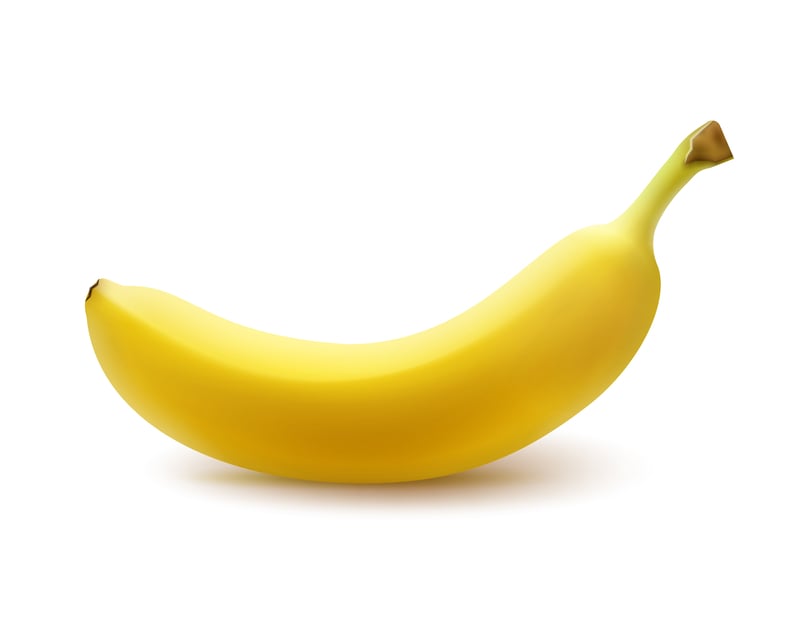See the Warning Signs Your Body is Low in Potassium

If you’re like 98% of Americans, your body is low in potassium—perhaps dangerously so. 1 Although severe potassium deficiency is rare, the vast majority of us are getting far from optimal levels of potassium—between 3,500 and 4,700 mg per day. The explanation is quite simple: Most people neglect potassium-rich vegetables and fruits for the convenience of the typical Western diet, which relies heavily on an abundance of potassium-deplete processed foods. 2, 3
You may think of this essential mineral and electrolyte only when you pick up a banana, but potassium is vital for:
- Regulating muscle contractions
- Maintaining nerve function
- Regulating the balance of fluids in your body to help prevent dehydration
- Reducing water retention
- Sustaining healthy blood pressure levels
- Controlling the electrical activity of the heart
- Supporting heart health and circulation
- Decreasing risk of heart disease (by up to 49%) 4
- Preserving bone density and improving bone health as well as protecting against osteoporosis
- Reducing the risk of stroke and heart disease (especially when properly balanced with sodium)
- Protecting against muscle loss and preserving muscle mass, especially in older individuals 5
- Decreasing the risk of kidney stones
- Maintaining the acid-base balance in the body
As an electrolyte, potassium allows the body to conduct electricity. (When dissolved in water, it produces positively charged ions.) It’s also needed to counterbalance sodium.
And when our bodies are low in potassium—such as when we’re not eating enough potassium-rich foods or we’re losing too much—we can experience a number of worrying signs.
Warning Signs of Low Potassium
The most common signs of low potassium include:
- Fatigue
- Just feeling flat-out bad (general malaise)
- Mood disruptions and decreased brain function
- Muscle weakness
- Restricted blood flow
- Muscle aches and cramps
- Stiffness throughout the body
- Bloating and constipation
- Heart palpitations
If levels get extremely low, more worrying signs of low potassium include:
- Tingling or itchy sensations in the hands, arms, feet, or legs
- Muscle spasms
- Increased urination
- High blood sugar levels
- Severe muscle weakness or even the inability to move (paralysis)
- Painful obstructions in the gut
- Kidney problems
- Difficulty breathing and irregular heartbeat (arrhythmia), which can be serious and even life-threatening.
If you think you might be severely low in potassium, please visit your healthcare provider.
Even if you don’t seem to have any significant symptoms, you may need to increase your intake of potassium. Remember, only two percent of us are getting enough, and even if you are consuming plenty of potassium-rich foods, you could still be low in potassium, as levels can also be depleted by:
- Excessive vomiting and diarrhea
- Sweating a lot
- Drinking too much alcohol
- Some drugs, including diuretics, antibiotics, and corticosteroids
What Are the Best Sources of Potassium?
While you can supplement with potassium, it’s easy—and more healthful—to get your potassium from dietary sources. The two most well-known sources are, of course, bananas (422 mg for a medium-sized fruit) and avocados (364 mg in a half cup), but the list goes on. Potassium can be found in a number of other foods, including: 6
- Potatoes (baked with skin): 941 grams per medium potato
- Pomegranates: 666 mg each
- Beet greens (cooked): 654 per ½ cup
- Watermelon: 640 mg in just 2 wedges
- Raisins: 618 mg in a ½ cup
- Coconut water: 600 mg per cup
- White beans (such as navy beans, cannellini, and great northern): 595 mg per ½ cup
- Plain nonfat yogurt: 579 mg per cup
- Sweet potatoes (baked in skin): 542 mg per medium potato
- Wild salmon: 534 mg per 3-oz serving
- Tomato juice: 527 mg per cup
- Beets: 518 mg per cup
- Swiss chard (cooked): 481 mg per ½ cup
- Mackerel: up to 474 mg per 3-oz serving
- Acorn squash: 448 mg per ½ cup
- Black beans: 401 mg per ½ cup
- Dried apricots: 378 mg per ¼ cup
- Spinach (cooked): 419 per ½ cup
- Lentils: 365 mg per ½ cup
- Kidney beans: 357 mg per ½ cup
- Milk: 350 – 382 mg per cup
- Tomatoes: 292 mg per medium tomato
- Coffee: 116 mg per cup
As you can see, there are so many choices, it should be fairly easy to get enough potassium when eating a diet that’s made up primarily of nutritious whole foods (rather than processed foods). The FDA limits the amount of potassium in supplements to less than 100 mg, so you are much better off getting your potassium from foods.
There can be dangers of getting too much potassium as well, especially if the kidneys are damaged and cannot properly excrete potassium from the body. Too much potassium can lead to heart palpitations, shortness of breath, and chest pain and requires immediate attention by a healthcare professional. Fortunately, no food-related cases of potassium overload have been reported, and potassium toxicity has only been found in folks who have a chronic kidney disease or who use certain medications. 7
Signs of Low Potassium: A Wrap Up
Potassium is vital for the healthy function of the body—especially the heart, muscles, and respiratory system. Chances are good that you are low in potassium, even if you’re eating a fairly healthy diet. So, look for foods that are rich in potassium. And don’t worry, you have many options beyond bananas and avocados. Even an extra serving or two per day of potassium-rich foods has been shown to support optimal levels of potassium.




 7 Signs Your Body is Seriously Low on Collagen (not just wrinkles)
7 Signs Your Body is Seriously Low on Collagen (not just wrinkles) Health Expert: "Turmeric Doesn't Work (unless...)"
Health Expert: "Turmeric Doesn't Work (unless...)" 3 Warning Signs Your Probiotic Supplement is a Total Waste
3 Warning Signs Your Probiotic Supplement is a Total Waste

